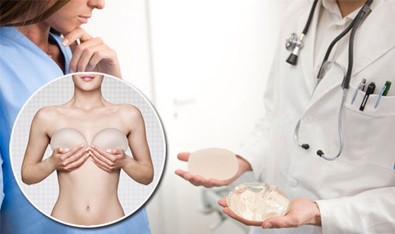News - mar 24/11/2020 - 15:03
Breast Screening after Breast Implant
Dernière mise à jour 11/24/2020 - 15:03

It is half a century since silicone breast augmentation became available – and it still rates as a popular and common cosmetic-surgery procedure among women. Breast augmentation patients are always consulted carefully about the surgery information, cost, and post-operative care at the beginning of the operation; however, routine care and breast examination have been a concern to breast augmentation patients after surgery. For example, whether to have a clinical breast exam if they have no signs or symptoms; and if there is, what tests will be performed in each examination.
How often should I get my breast implants checked?
The FDA (the U.S. Food and Drug Administration) currently recommends periodic screenings for silent silicone breast implant ruptures three years after having silicone implants placed, and every two years after that. Magnetic resonance imaging (MRI) continues to be the most effective method of detecting this complication.
What is a silent rupture? It is a breast implant rupture without symptoms that is not apparent but through appropriate imaging techniques such as MRI. Most silicone breast implant ruptures are silent. Today silicone outer shell is filled with a firmer gel texture; therefore, it can hold the form of breast implants even when the implant is ruptured. However, it also makes it more challenging to detect ruptures without technology assistance. A patient may have had a ruptured implant for many years without even knowing it. In any case of this complication, if the outer shell is intact, the silicone will not migrate out of the bag; yet we recommend removing the implant to ensure the safety of the patient.

If you experience a rapid increase in swelling, tenderness, or misshape of your breasts, or if you have any other breast changes:
It is essential to pay attention to and self-exam your breasts if there are any unusual breast changes after the silicone implant. The following are some of the signs and symptoms that may occur:
- Your breasts might seem unnaturally hard to the touch or look unusually round and are accompanied by pain. This is one of the most frequent complications and adverse outcomes experienced by breast implant patients. About one in ten patients experience this complication in varying degrees. For patients with mild to moderate cases of this situation, nonsurgical treatment can be performed. However, if the case is more challenging, the treatment might require implant removal (with or without replacement).
- Your breast pain might be accompanied by recurrent fluid collections. This is the symptoms of Anaplastic large cell lymphoma (ALCL) – a rare disease associated with breast implants. Lymphoma is a cancer of the lymph system, part of our immune system. The risk of having this occur was estimated to be 1/3.800 to 1/30.000. Surgical treatment requiring implant removal will be performed.
It is crucial not to be neglect any breast changes or symptoms, even if you do not have a breast implant. The earlier you detect and address any issue, the easier it will be to treat. If you end up ruling out a problem, you’ll have the peace of mind you deserve.
Even when you do not notice any abnormal signs, you should undergo routine mammograms after your breast augmentation.
Even if you are already satisfied with the overall look of your breast implant, the following reasons are why you still should consult with your doctor regularly:
- Breast implants are not lifetime devices: The longer a woman has implants, the more likely it is that she will need to have surgery to remove or replace them. The risks of many complications such as implant rupture with deflation, wrinkling, asymmetry, scarring, pain, infection, etc. might gradually increase after the first ten years, so you should at least see a doctor after ten years of breast augmentation.
- Your breasts and body will change over the years: Pregnancy, breastfeeding, weight changes, or natural aging will affect the breast tissue. As time passes, your breast implant will not be in the shape it used to be before. You should consult with your doctor to have valuable information about the integrity of silicone implants and associated complications.
At Hanoi French Hospital, we have multiple methods to check the breast implants periodically for patients including mammography, breast ultrasound, especially magnetic resonance imaging of silicone breast implants to evaluate the complications. In the course of clinical practice, we have found many cases of patients having implant rupture without symptoms.

A 51-year-old female patient, 10 years after breast augmentation having regular examination. The MRI diagnosed a completely ruptured implant in the right chest.

A 36-year-old female has a check-up after 5 years of breast augmentation. The MRI diagnosed implant rupture in the right chest.
For further information, please contact us at: (84-24) 3577 1100, or send us an inquiry here or make an appointment here.



